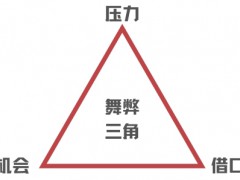据Rigzone7月21日报道,对汽油、柴油/汽油和喷气式飞机/煤油等轻产品的需求在很大程度上推动了炼油厂的利用。即使是在能源转型延迟的情况下,轻产品需求也将在本世纪中叶趋于平稳。
全球咨询公司麦肯锡公司在其最新报告《2035年全球下游展望》中如是总结。根据研究,假设目前的趋势,到2035年,轻产品需求将比2019年的水平每天减少280万桶。麦肯锡预测,如果能源转型加速,这一时期的需求下降将更为剧烈,达到1170万桶/日。
该咨询公司预计,欧洲和北美的轻工业产品需求将大幅下降,但它指出,在能源转型延迟的情况下,到2030年,非洲地区的需求可能会增长100万桶/日。
麦肯锡表示,全球轻型产品需求的整体下降归因于以下因素:
(1)电动汽车的普及
(2)低排放航空和船舶燃料的效率提高和吸收
(3)增加塑料需求减少和回收
(4)减少可再生能源和存储成本
(5)住宅供热电气化
(6)欧盟中低温供热电气化。
鉴于上述情况,全球炼油行业是否正在发生危机?麦肯锡认为,事实并非如此。该公司声称,尽管该行业预计将在某些地区收缩,但“在所有情况下都将保持非常大的规模”。此外,其加速能源转型案例预计,到2035年,全球炼油行业仍将生产9400万桶/日的液体。
麦肯锡资深专家蒂姆·菲茨吉本(Tim Fitzgibbon)评论说:“下游世界正在迅速变化,炼油厂必须适应这种变化,以增强韧性。”首先是核心炼油和零售业务——通过拥抱数字化,潜在地投资于脱碳,更好地融入石化行业——然后是更广泛的投资组合。”
Fitzgibbon确定了炼油商的其他机会领域。
他总结道:“许多炼油商可以通过将投资投向新兴市场和价值链下游,来获取增长的空间。他们还应该考虑在新的价值池,包括新能源服务、新的流动性和先进燃料上下大赌注。这些转变对于实现每一分钱的潜在盈利能力至关重要,因为产品和地域市场组合的转变超出了人们的认识。”
寿琳玲 编译自 Rigzone
Is the Refining Sector in Crisis?
Demand for light products such as gasoline, diesel/gasoil, and jet/kero largely drives refinery utilization. Even in the case of a delayed energy transition, light product demand will plateau by the middle of this decade.
So concludes global consultancy McKinsey & Company in its new report “Global downstream outlook to 2035.” According to the research, light product demand will fall by 2.8 million barrels per day (bpd) from 2019 levels by 2035, assuming current trends. If the energy transition accelerates, the demand decline during the period will be a more dramatic 11.7 million bpd, McKinsey predicts.
The consultancy foresees a particularly sharp drop in light product demand in Europe and North America, but it points out the one region – Africa – could actually see demand grow by 1 million bpd by 2030 under a delayed energy transition.
McKinsey noted that it attributes the overall global decline in light product demand to the following factors:
uptake of electric vehicles
efficiency gains and uptake of low-emission aviation and marine fuels
increased plastics demand reduction and recycling
reduced renewables and storage costs
residential heat electrification
electrification of European Union low- and medium-temperature heat.
Given the above scenario, is a crisis underway in the global refining sector? According to McKinsey, it is not. The firm asserts the industry, though projected to contract in some regions, will likely remain “very large in all scenarios.” Moreover, its accelerated energy transition case projects the global refining sector will still produce 94 million bpd of liquids in 2035.
“The downstream world is changing rapidly, and refiners must adapt to build in resilience,” commented McKinsey Senior Expert Tim Fitzgibbon. “First in core refining and retail operations – by embracing digitalization, and potentially investing in decarbonization and better integrating into petrochemicals – and then within the wider portfolio.”
Fitzgibbon identified additional areas of opportunity for refiners.
“Many refiners can capture pockets of growth by directing investments both into emerging markets and further down the value chain,” he concluded. “They should also consider placing big bets on emerging value pools including new energy services, new mobility, and advanced fuels. These shifts are essential to achieving every penny of potential profitability as the product and geographical market mix shifts beyond recognition.”
免责声明:本网转载自其它媒体的文章,目的在于弘扬石化精神,传递更多石化信息,并不代表本网赞同其观点和对其真实性负责,在此我们谨向原作者和原媒体致以敬意。如果您认为本站文章侵犯了您的版权,请与我们联系,我们将第一时间删除。







